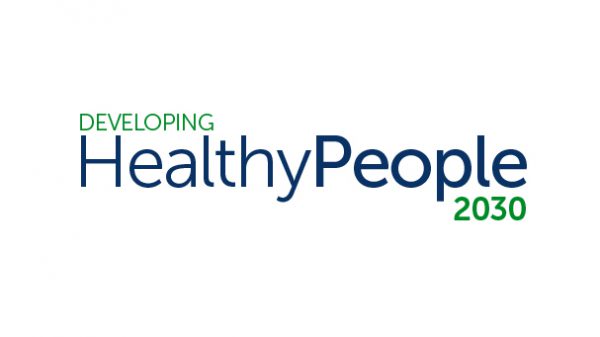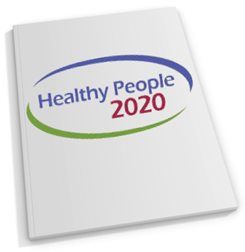Planning Underway for Nation’s Next Decade of Public Health Goals, to be Unveiled in 2020
/In fiscal year 2017, the State of Connecticut received $373,921 from the Centers for Disease Control and Prevention for childhood lead poisoning prevention programmatic activities. The funding arrived, at least in part, because one of the goals of the federal government’s Healthy People 2020 initiative, launched in 2010, is the elimination of childhood lead poisoning as a public health problem.
The Center for Disease Control and Prevention (CDC), the Department of Housing and Urban Development (HUD), U.S. Environmental Protection Agency (EPA), and other agencies have developed a federal interagency strategy to achieve this goal by 2020. The key elements of this interagency strategy include:
- Identification and control of lead paint hazards;
- Identification and care for children with elevated blood lead levels;
- Surveillance of elevated blood lead levels in children to monitor progress; and
- Research to further improve childhood lead poisoning prevention methods.
The U.S. Department of Health and Human Services unveiled Healthy People 2020 in December 2010, laying out the nation’s new 10-year goals and objectives for health promotion and disease prevention. Healthy People provides science-based, 10-year national objectives for improving the health of all Americans, according to the program’s website.
Childhood lead poisoning prevention was one item on a lengthy list of national priorities. Chronic diseases, such as heart disease, cancer and diabetes, are responsible for seven out of every 10 deaths among Americans each year and account for 75 percent of the nation’s health spending, officials said as the agenda was announced. Topics added in 2010 included Dementia’s, including Alzheimer’s Disease; Early and Middle Childhood; Sleep Health; Social determinants of Health; and Adolescent Health.
 For three decades, since 1979, Healthy People has established benchmarks and monitored progress over time in order to encourage collaborations across communities and sectors, empower individuals toward making informed health decisions and measure the impact of prevention activities. The initiative is housed in the federal office of Disease Prevention and Health Promotion, part of the Department of Health and Human Services (HHS). Approximately three-quarters of the goals of the previous decade-long Healthy People agenda had been achieved, officials said in 2010.
For three decades, since 1979, Healthy People has established benchmarks and monitored progress over time in order to encourage collaborations across communities and sectors, empower individuals toward making informed health decisions and measure the impact of prevention activities. The initiative is housed in the federal office of Disease Prevention and Health Promotion, part of the Department of Health and Human Services (HHS). Approximately three-quarters of the goals of the previous decade-long Healthy People agenda had been achieved, officials said in 2010.
Even as federal and state authorities work to achieve the 2020 goals, work has begun on the next set of national objectives.
The planning process for Healthy People 2030, the fifth edition of Healthy People, is already underway. Federal agencies sought comments from the public last fall on a proposed framework, which “aims at new challenges and builds on lessons learned from its first four decades.” In December, officials indicated that “The foundational principles and overarching goals of the proposed framework for 2030 include a call to attain health literacy, achieve health equity and eliminate health disparities, improve the health and well-being of all populations.”
Once the framework is finalized, the agency “will begin the development and selection process for Healthy People 2030 objectives. We anticipate that the public will be invited to comment on proposed objectives as part of this process.” It is expected that four regional “listening” sessions will be held. Connecticut is included in the New England region, one of 10 regions across the country. A session held in Atlanta in November was attended by 77 people.
The imperative to improve public health has not lessened over time.
“The United States lags behind other Organisation for Economic Co-operation and Development (OECD) countries on key measures of health and well-being, including life expectancy, infant mortality, and obesity, despite having the highest percentage of GDP spent on health,” the website points out.



 The Yale School of Public Health also
The Yale School of Public Health also 
 he Division of Pediatric Surgery since 2007 and is an associate professor of pediatrics and surgery at UConn Health. In announcing her appointment, Connecticut Children’s pointed out that through her research, Finck “revolutionized outcomes of pediatric and neonatal diseases, most specifically leading efforts focused on identifying and treating those that affect the lungs, esophagus and brain.” She was honored by The Group on Women in Medicine and Science, who awarded her the Outstanding Clinical Scientist Woman Faculty Award, last year.
he Division of Pediatric Surgery since 2007 and is an associate professor of pediatrics and surgery at UConn Health. In announcing her appointment, Connecticut Children’s pointed out that through her research, Finck “revolutionized outcomes of pediatric and neonatal diseases, most specifically leading efforts focused on identifying and treating those that affect the lungs, esophagus and brain.” She was honored by The Group on Women in Medicine and Science, who awarded her the Outstanding Clinical Scientist Woman Faculty Award, last year.

 The model reflects that determinants of health directly influence health outcomes. A health outcomes category and four categories of health determinants are included in the model: behaviors, community & environment, policy and clinical care.
The model reflects that determinants of health directly influence health outcomes. A health outcomes category and four categories of health determinants are included in the model: behaviors, community & environment, policy and clinical care.










 The mission of the Jordan Porco Foundation, a 501(c) (3) public charity, is to prevent suicide, promote mental health, and create a message of hope for young adults. They accomplish this by providing engaging and uplifting peer-run programs. Their programs strive to start a conversation about mental health that reduces stigma while encouraging help-seeking and supportive behaviors.
The mission of the Jordan Porco Foundation, a 501(c) (3) public charity, is to prevent suicide, promote mental health, and create a message of hope for young adults. They accomplish this by providing engaging and uplifting peer-run programs. Their programs strive to start a conversation about mental health that reduces stigma while encouraging help-seeking and supportive behaviors.



 A synthetic turf study was undertaken in 2016 by four United States agencies — EPA, Consumer Products Safety Commission, the Centers for Disease Control and Prevention/Agency for Toxic Substances and Disease Registry — which has yet to be finalized.
A synthetic turf study was undertaken in 2016 by four United States agencies — EPA, Consumer Products Safety Commission, the Centers for Disease Control and Prevention/Agency for Toxic Substances and Disease Registry — which has yet to be finalized. Blumenthal first became concerned about the artificial surface when his children were playing on the crumb-rubber athletic fields. “I became concerned as a parent, as much as a public official, ten years ago, and at first was somewhat skeptical, but now very firmly believe that we need an authoritative, real study about what’s in these fields,” Blumenthal told ABC News two years ago.
Blumenthal first became concerned about the artificial surface when his children were playing on the crumb-rubber athletic fields. “I became concerned as a parent, as much as a public official, ten years ago, and at first was somewhat skeptical, but now very firmly believe that we need an authoritative, real study about what’s in these fields,” Blumenthal told ABC News two years ago.



























